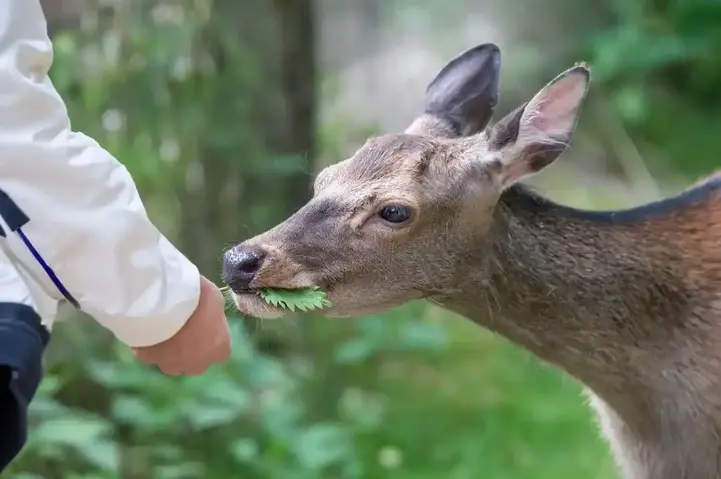Why might talking to animals become a reality anytime soon?
For centuries, humans have forged deep bonds with animals, cherishing them as pets, relying on them for work, and admiring them in the wild. This complex relationship has fostered fascination with understanding and communication with animals. Advances in science and technology now make the idea of talking to animals, which were once elusive, a tangible possibility. This article explores the evolution of human-animal relationships, advances in human-animal communication, and the promising future of human-animal conversations.
1. The development of human-animal relations.

Humans have coexisted with animals for thousands of years, forming symbiotic relationships that have shaped societies. Early humans domesticated dogs, resulting in mutual benefits in hunting and protection. Over time, animals have become an integral part of human life, acting as work companions, workers, and symbols in cultural and religious contexts. This deep attachment supports the desire to communicate more effectively with animals.
Recommend
2. Understand the behavior of the animal.

Before you can talk to animals, you must understand their behavior and communication methods. Ethicists and zoobehavioral scientists study how animals interact with each other and with their environments. Through observation and experimentation, scientists were able to decipher complex animal languages, such as the vibratory dance of bees or the complex sounds of dolphins. This basic knowledge is essential for the development of human-animal communication technologies.
3. Animal communication science.

Animal communication includes a variety of cues, including articulation, body language, and chemical cues. Researchers have made great strides in understanding these communication methods. For example, studies of the sounds of primitive creatures have revealed similarities with human language structures, suggesting a common evolutionary origin. Understanding these signals paves the way for more sophisticated communication tools.
4. Human-animal communication: one-sided desire or mutual ambition?
The idea of communicating with animals is captivating, but it raises an important question: Is this a one-sided human desire, or are animals also willing to communicate with us? Exploring this aspect involves examining both human motives and potential reciprocity from the animal side.
- Human motivation for communication.

Humans have long wanted to communicate with animals for several reasons:
1. Companionship and emotional bonding: Pet owners often seek a deeper relationship with their pets, with the aim of better understanding their needs and emotions.
2. Conservation and protection: In wildlife conservation, understanding the communication between animals can help protect and ensure the survival of endangered species.
3. Agricultural efficiency: Farmers and livestock owners can benefit from improved communication with their animals to enhance well-being and productivity.
4. Scientific curiosity: Scientists remain motivated by the desire to understand the cognitive and communicative abilities of different species, which contributes to knowledge about animal intelligence and behavior.
- Animal communication with humans.

While the desire to communicate often seems human-centered, evidence suggests that many animals also seek to communicate with him:
1. Pets: Pets such as dogs, cats, and horses frequently use words, body language, and behavior to express their needs and emotions to human caregivers. Dogs, for example, are known to use a variety of barking, whining and gestures to communicate with humans, indicating a mutual desire to interact.
2. Interactions with wildlife: In the wild, some species have shown a willingness to communicate with humans, especially when they recognize humans as part of their environment. For example, dolphins have been observed approaching boats and interacting with humans, showing curiosity and some form of interactive communication.
3. Research studies: Studies related to animal cognition have shown that some animals are able to understand human gestures and commands. For example, chimpanzees and other primitive creatures have been trained to use sign language or symbols to communicate with human researchers, suggesting their ability to engage in two-way communication.
Mutual benefits of communication

The possibility of two-way communication provides mutual benefits:
1. Improved care: Understanding animals' needs and emotions can lead to better care, enhancing their well-being and quality of life.
2. Promote bonding: For pet owners, effective communication can deepen the emotional bond with their pets, leading to more fulfilling relationships.
3. Conservation efforts: In conservation, effective communication can improve strategies to protect endangered species, benefiting animals and the ecosystems in which they live.
4. Scientific insights: Two-way communication can provide deeper insights into animal perception and behavior, leading to the development of scientific knowledge and possibly leading to new discoveries about the natural world.
5. Technological advances in human-animal communication.
Modern technological innovations have accelerated advances in human-animal communication. Wearables and artificial intelligence are at the forefront of this revolution. AI algorithms can analyze animal sounds and translate them into human language, while wearables can monitor and interpret animal body language. These technologies have the potential to bridge the communication gap between humans and animals.
6. Breakthroughs in artificial intelligence and machine learning.

Artificial intelligence and machine learning have become indispensable in deciphering communication between animals. By processing vast amounts of data, machine learning algorithms can identify patterns and meanings in animal voices and behaviors. Projects such as Google Translate for Animals and various university research initiatives are leveraging artificial intelligence to create rudimentary translation tools that can one day facilitate one-on-one conversations with animals.
7. The role of neuroscience.
Neuroscience plays a crucial role in understanding the cognitive abilities of animals and their ability to communicate. Brain imaging and neural mapping techniques reveal how animals perceive and process information. This knowledge helps develop communication interfaces that align with the cognitive frameworks of different species, ensuring more effective and meaningful interactions.
8. Ethical considerations and challenges.

While the prospect of talking to animals is exciting, it raises ethical considerations. Ensuring animal well-being and autonomy in communication research is crucial. Scientists and ethicists must address questions about consent, the impact of communication on animal behavior, and the potential exploitation of animals. A balanced approach that respects animal rights is essential and is being moved forward.
9. The future of human-animal communication.
The future of human-animal communication is promising, with potential applications covering different fields. In conservation, better communication can help protect endangered species by understanding their needs and behaviors. In agriculture, this can improve the well-being and productivity of livestock. For pet owners, this promises deeper relationships and better care. With the advancement of technology, the dream of talking to animals has become closer to reality.

The prospect of human-animal communication is not just a one-sided human aspiration, but a mutual desire that can benefit both parties. While humans are driven by different motivations to understand and communicate with animals, many animals also show a willingness to deal with them. This mutual ambition opens up new possibilities for strengthening human-animal relations, improving animal welfare, and enhancing understanding of the natural world.
Talking to animals, once just fiction and folklore, is about to become a reality thanks to scientific and technological advances. By understanding animal behavior, leveraging artificial intelligence and machine learning, and addressing ethical considerations, humanity paves the way for meaningful interspecies communication. The journey is still unfolding, but the potential benefits of environmental conservation, animal welfare, and human-animal relationships are enormous. At these exciting frontiers, the dream of talking to animals offers a glimpse of a future in which the bonds between humans and animals are stronger and deeper than ever.








